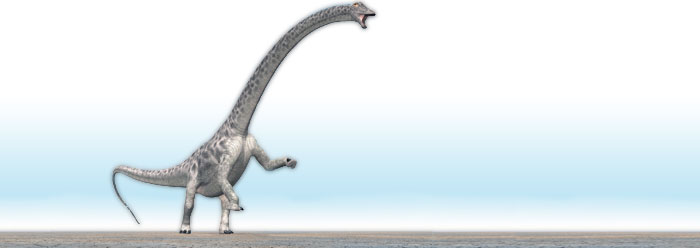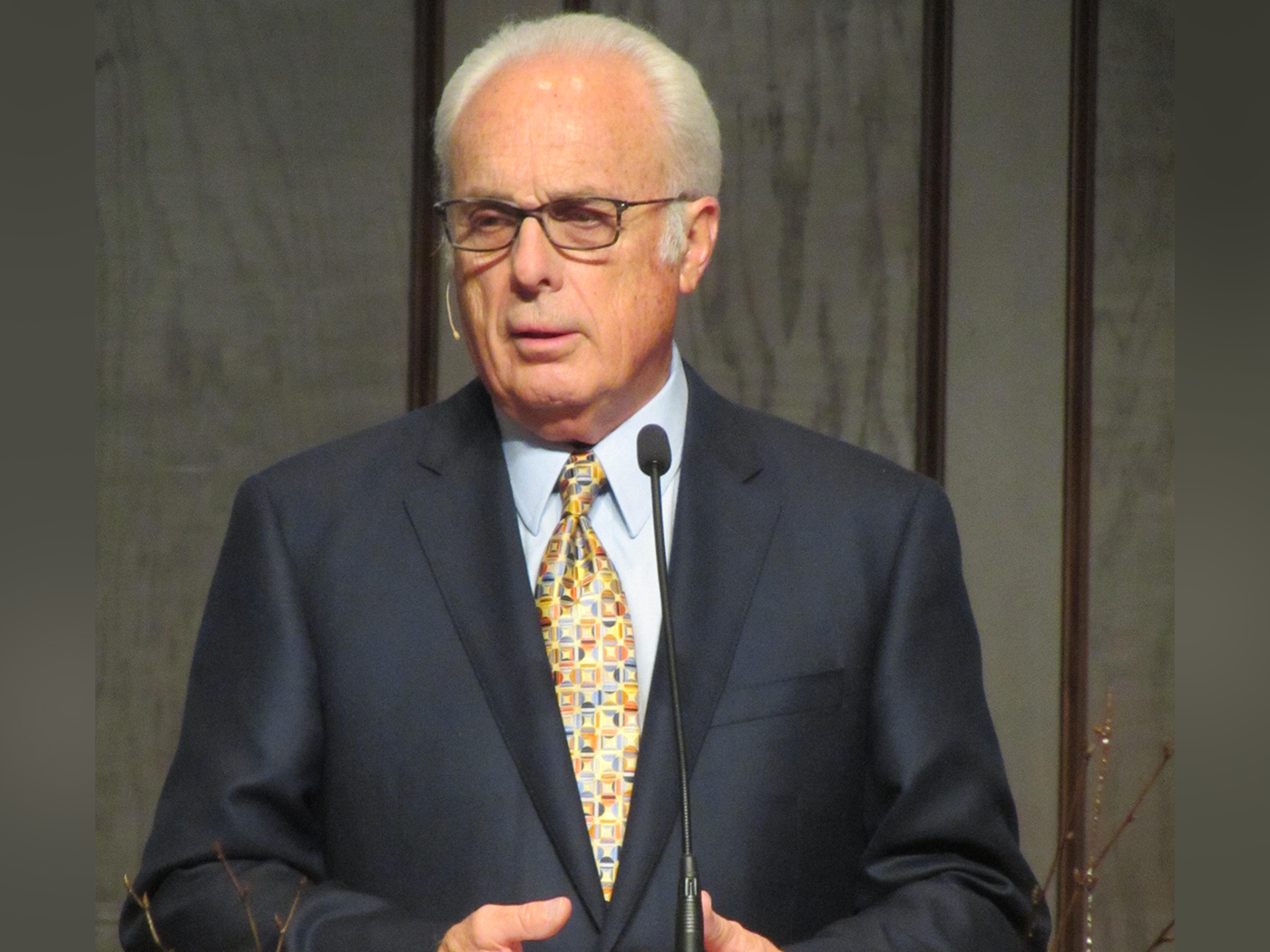by Brian Thomas, M.S., & Frank Sherwin, M.A. *
Sauropods, such as Diplodocus and Apatosaurus, were immense, four-footed dinosaurs. By their fossils, researchers know that their skeletal design features were uniquely equipped to support their bulk. An attempt in a recent Nature article to trace an evolutionary backstory for some of these features clung doggedly to evolution despite the evidence against it. Observations confirm that sauropods were expertly formed—not evolved.
Sauropods Had Unique Features
Fredric Heeren wrote in Nature that sauropods’ long necks allowed them a wide reach through the treetops. They were able to eat the massive amount of foliage required to maintain their size without having to expend extra energy moving from tree to tree. Some of the largest may have needed up to a ton of vegetation every day. Heeren wrote:
That kind of feeding required long necks, which would have been impossibly heavy if they were built with solid vertebrae. But large sauropods had vertebrae riddled with holes. These air-filled, or pneumatic, bones weighed only about 35% as much as solid ones.1
Thus, unlike other dinosaurs, sauropods had hollowed vertebrae and small heads—design features that lightened the load placed on their necks. Heeren wrote that “adaptation enabled the development of extremely long necks,” but provided no explanation for how one adaptation could have led to the other.1 This assertion merely begs the question of sauropod long-neck evolution.
Also, the “pelvis and limbs” of sauropods were very different from those of the smaller dinosaurs, having extra sacral vertebrae and interlocking leg bones that operated like pillars, creating “a frame sturdy enough to support their heft,” according to Heeren.1
Sauropods grew very quickly during their juvenile years, so that their sheer size soon became an effective defense against predators. If transitional “semi-sauropods” grew as slowly as other dinosaurs, yet did not have horns, claws, clubs, or large, tooth-adorned jaws to defend themselves, they may well have been too easily eaten—thus putting a stop to evolutionary progress.
These dinosaurs’ fast bone and body growth was complicated and precisely coordinated. Heeren quoted University of Bonn paleontologist Martin Sander as saying, “A scaffold of bone is thrown up very quickly, making the bone grow in thickness by about one tenth of a millimetre per day.”1 The scaffold material was later filled in with minerals as the creature grew in size.
Candidate Sauropod Ancestors Fail the Test
Clearly, sauropods had all-or-nothing design features. Without small heads, hollow vertebrae, long necks, pillar legs, specially shaped pelvis bones, and fast growth rates—all at the same time—sauropods could not have existed. This is why sauropod evolution has been imagined as having happened in “an evolutionary jump.”1 The Nature news feature suggested that isolated sauropod-like features found in non-sauropod dinosaur kinds illustrate an evolutionary backstory for sauropod origins.
For example, a small non-sauropod named Pantydraco had interesting pits in its vertebrae, unconvincing “potential precursors” for sauropods’ hollow vertebrae. Also, the two-legged “prosauropod” Plateosaurus might have had “signs” of fast-growing bone.1 However, microscopic growth rings in plateosaur bone fossils indicate that they adjusted their growth rates to fit their circumstances, like some reptiles do today.2 Unlike the 100-foot-long sauropods, plateosaur adults ranged from 15 to 30 feet long.
And just what is a “prosauropod”? It is a label given to candidate ancestors of sauropods. “Prosauropoda” are supposed to be primitive saurischian dinosaurs, all of which shared a lizard-like hip structure.
But if Genesis is real history, then there are no primitive dinosaurs—just dinosaurs in their various kinds created on Day 6. Surely sauropods would qualify as “beasts of the earth,” made when “God made the beast of the earth after his kind.”3
Also, prosauropods have been found in rock layers above and were therefore deposited after the sauropod dinosaurs into which they presumably evolved.4 For example, sauropod footprints found in rocks designated as “200 million years old” were discovered in Switzerland and were 100 percent sauropod, as predicted by creation.5
One prosauropod, a bipedal dinosaur named Aardonyx, probably did not have fleshy cheeks, so it perhaps could have opened its mouth wider to take in more vegetation, like sauropods. But it had a narrow, V-shape mouth, unlike the wide sauropod U-shape. Plus, another dinosaur had just the opposite—a U-shape mouth with fleshy cheeks. These distinct creations show no objective evolutionary relationships.
Leonerasaurus, another two-legged dinosaur, had extra hip vertebrae, like sauropods. But though they are considered by some to have been “near-sauropods,” Heeren noted that they “were not the ancestors of sauropods.”1 Why mention them in the context of sauropod evolution if they were not even part of that evolution?
Heeren explained their inclusion by writing, “Near-sauropods of the Jurassic preserve information about the adaptations that appeared among the unknown ancestors of sauropods.” But unfortunately this is just another assertion that begs the question of evolution, since it is based wholly on the assumption that certain adaptions somehow “appeared” in as yet unidentified dinosaurs. In fact, after presenting a parade of candidate dinosaurs with proposed sauropod precursor features, Heeren here acknowledged that the ancestors of sauropods are still “unknown.”1
Where’s the Fossil Evidence?
If sauropods evolved, then why are there no fossil “pre-sauropods” that have at least two, three, or four of the uniquely sauropod features, instead of just one or merely a possible part of one? If sauropods evolved over eons, then most of these fossils should be transitional. For example, why are gradually lengthening dinosaur necks not apparent as one ascends the rock record? Instead, these candidate “prosauropods” were perfectly developed creatures of their own types, showing no hint of evolutionary experimentation.
Some doubt that prosauropods are even sauropod ancestors! One group of dinosaur experts wrote:
The ancestry of the sauropods, before they burst onto the world scene on almost every continent in the Middle Jurassic, is obscure. The frequent assumption that they arose from prosauropods, probably melanorosaurids, has yet to be verified.6
In the 2020 Oxford Dictionary of Zoology, one reads that “current theory suggests that the prosauropods were a side-branch on the sauropod (Sauropoda) family tree, and not ancestral to later forms.”7 Clearly, Heeren’s recent Nature article paints a contrived story of sauropod evolution from prosauropods that ignores the controversy caused by the complete lack of supporting evidence.
Not just sauropod, but dinosaur evolution in general has received no uncontested fossil support. Supposedly, four-legged lizard-like reptiles evolved into bipedal dinosaurs, some of which evolved back into the four-legged sauropods. But in 2010, a dog-size fossil named Asilisaurus kongwe was discovered in Tanzania. Evolutionists dated this to 243 million years, which caused a big problem. “The crazy thing about this new dinosaur discovery is that it is so very different from what we all were expecting, especially the fact that it is herbivorous and walked on four legs,” said one of the paleontologists who studied the find.8 They were expecting bipedal ancestors in rock layers of that “time.” This discovery is not “crazy,” but confirms that theories of dinosaur evolution are crazy.
Finally, is there any indication how the numerous small sauropod teeth evolved—or the teeth of any creature, for that matter? None at all.
The past few years have witnessed a remarkable flurry of research on the origin or origins of vertebrate teeth. While this work is progressing, the details of when, where, why, and how teeth first appeared still elude consensus. Indeed, there is not even agreement on the fundamentals, such as how we define a tooth.9
The details of dinosaur teeth evolution will always be “elusive,” since dinosaur teeth were created and therefore have no evolutionary backstory.
The Bible’s history provides a framework that best explains the most significant facts. First, sauropods were intentionally formed at one time, not morphed from other creatures. This is why no single undisputed ancestor exists, why their evolution is imagined to have happened in a “jump,” and why sauropods have all-or-nothing design features.
And the very reason that sauropod fossils exist “on almost every continent” is because, being a worldwide phenomenon, the Genesis Flood was powerful enough to totally overwhelm even the world’s most massive land creatures of that time.
The unique sauropod body structure demands that sauropods were specially created, not evolved. The fact that they were fossilized on many continents demands worldwide catastrophic mud burial. Unlike the miserable state of evolutionary guesswork, these observations confirm the biblical record.
References
- Heeren, F. 2011. Dinosaurs: Rise of the titans. Nature. 475: 159-161.
- Plateosaurs able to adjust growth to environmental conditions. University of Bonn Press Release, March 19, 2007.
- Genesis 1:25.
- Foster, C. 2000. The first dinosaurs. In The Ultimate Dinosaur. Silverberg, R., ed. New York: Ibooks, 50.
- World’s oldest Sauropod footprints uncovered. swissinfo.ch. Posted on swissinfo.ch Oct. 10, 2007, accessed September 22, 2011.
- McIntosh, J., M. K. Brett-Surman and J. O. Farlow. 1997. Sauropods. In The Complete Dinosaur. Farlow, J. O. and M. K. Brett-Surman, eds. Bloomington, IN: Indiana University Press, 271-272.
- Allaby, M. 2020. Oxford Dictionary of Zoology. New York: Oxford University Press, 499.
- Utah Paleontologist Part of International Team to Discover Oldest Known Dinosaur Relative. Utah Museum of Natural History Press release, March 3, 2010.
- Ungar, P. 2010. Mammal Teeth. Baltimore, MD: Johns Hopkins University Press, 73.
* Mr. Thomas is Science Writer and Mr. Sherwin is Research Associate, Senior Lecturer, and Science Writer at the Institute for Creation Research.
Cite this article: Thomas, B. and F. Sherwin. 2011. What the Fossils Really Say about Sauropod Dinosaurs. Acts & Facts. 40 (11): 17-18.




















